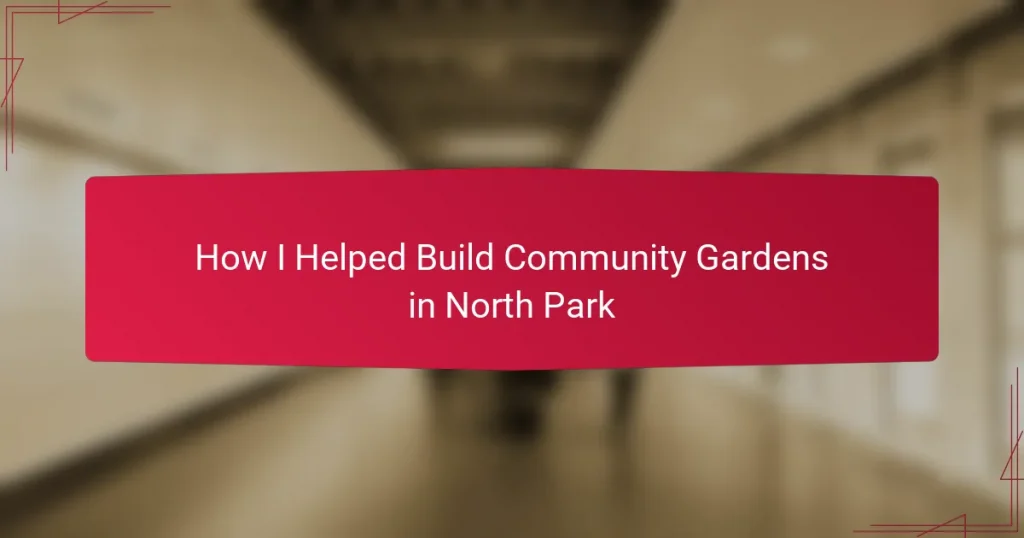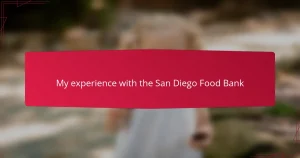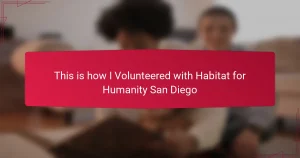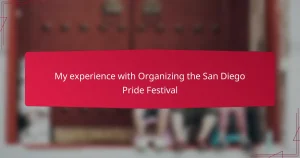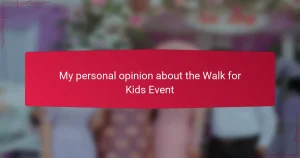Key takeaways
- Community gardens foster connections, promote sustainability, and offer educational opportunities, enhancing community spirit.
- Family fundraising in San Diego strengthens relationships and supports specific local projects, encouraging teamwork and shared goals.
- Involving children in fundraising events creates meaningful experiences and builds lasting community bonds.
- Partnerships with local businesses and organizations enhance community garden projects, fostering a sense of shared ownership and pride.
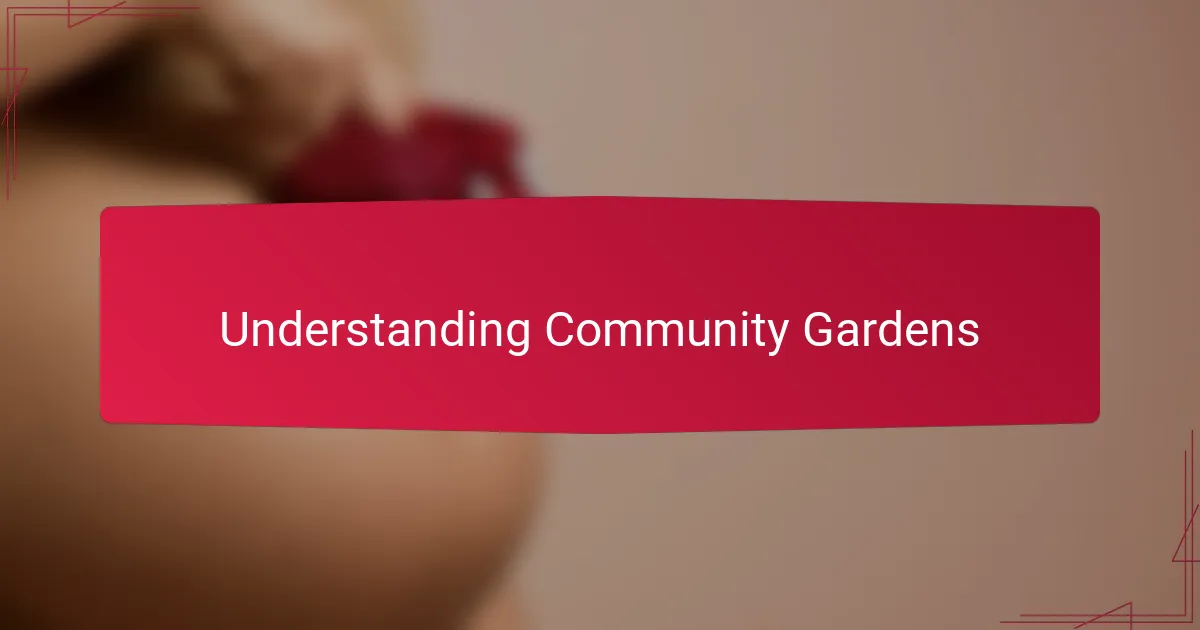
Understanding Community Gardens
Community gardens are more than just patches of green; they serve as vital spaces where neighbors connect, share, and grow together. When I first stepped into the garden in North Park, I was struck by the sense of togetherness and purpose that blossomed alongside the vegetables and flowers. It wasn’t just about growing food—it was about cultivating community spirit.
From my experience, community gardens provide numerous benefits, including:
– Promoting environmental sustainability through local food production
– Offering educational opportunities for children and adults about gardening and nutrition
– Creating a safe and welcoming space for social interaction across diverse ages and backgrounds
– Encouraging physical activity and mental well-being by connecting people with nature
– Supporting local fundraising efforts by hosting events and workshops
Being part of this process showed me how much a garden can heal not only the earth, but also the community’s bonds.
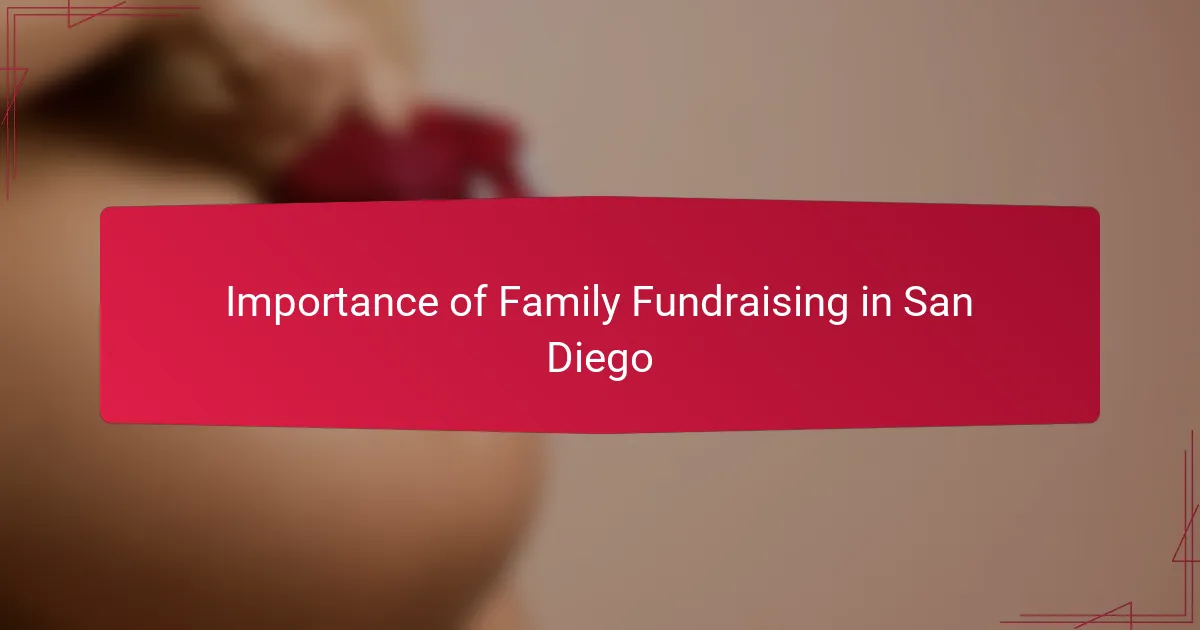
Importance of Family Fundraising in San Diego
Family fundraising in San Diego goes beyond just collecting money—it strengthens the bonds within our community. I’ve seen firsthand how bringing families together for a common cause, like building community gardens in North Park, creates a sense of pride and shared accomplishment. It’s more than fundraising; it’s about growing connections and nurturing a greener, more vibrant neighborhood.
| Traditional Fundraising | Family Fundraising in San Diego |
|---|---|
| Often individual-focused | Engages multiple family members together |
| May lack community connection | Builds strong local ties and shared goals |
| Funds used for general purposes | Supports specific projects like community gardens |
| Limited educational value | Teaches kids and adults about teamwork and sustainability |
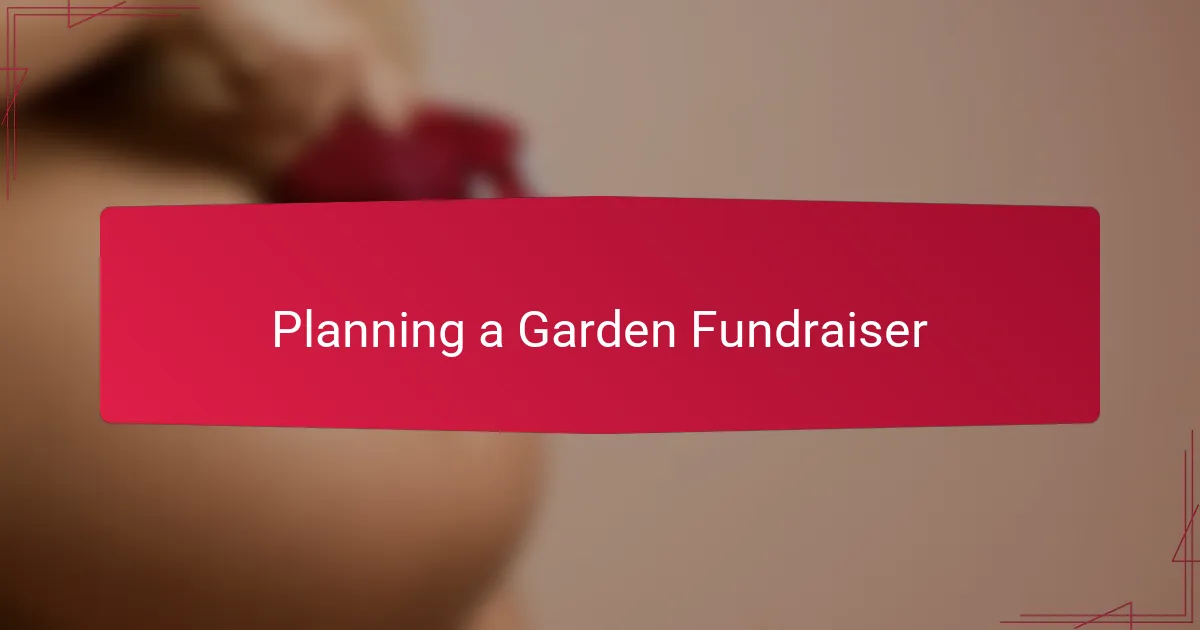
Planning a Garden Fundraiser
Planning a garden fundraiser requires thoughtful preparation to ensure both community involvement and financial success. From my experience, setting clear goals and identifying what the fundraiser will support helps rally neighbors around a shared vision.
One detail that made a big difference was choosing activities that connected directly with our community’s love for nature and sustainability. This approach not only boosted attendance but also created a genuine sense of contribution among participants.
Key steps for planning a garden fundraiser include:
– Defining a clear purpose for the fundraiser (e.g., plant supplies, tools, educational programs)
– Creating a detailed budget and setting realistic fundraising targets
– Selecting a convenient date and accessible location in the neighborhood
– Planning engaging activities such as plant sales, workshops, or raffle draws
– Promoting the event through social media, local schools, and community centers
– Recruiting volunteers who share a passion for gardening and community building
– Preparing materials that explain how the funds will benefit the garden and neighborhood
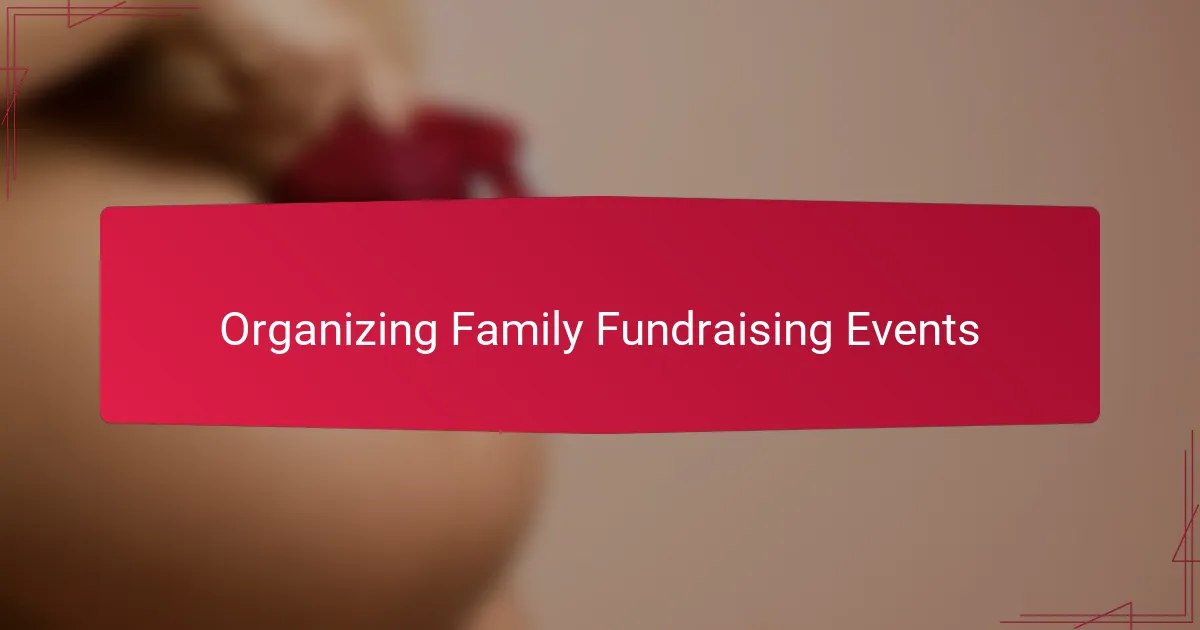
Organizing Family Fundraising Events
Getting families involved in fundraising events feels like planting seeds that grow into lasting relationships. I remember organizing a weekend plant sale where parents and kids worked side by side, selling seedlings and homemade treats. That shared effort sparked so much excitement—it wasn’t just about raising funds but about creating memories together.
Have you noticed how involving children makes fundraising feel more meaningful? When kids help craft signs, set up booths, or explain the garden’s mission to visitors, their energy lights up the whole event. It reminded me why family participation isn’t just helpful—it’s essential for building a caring community.
Sometimes, the simplest activities bring the community closest. One year, we hosted a family-friendly garden walk complete with storytelling about native plants. Seeing grandparents teaching grandkids about local flora while raising money made me realize how these events weave generations together in a very special way.
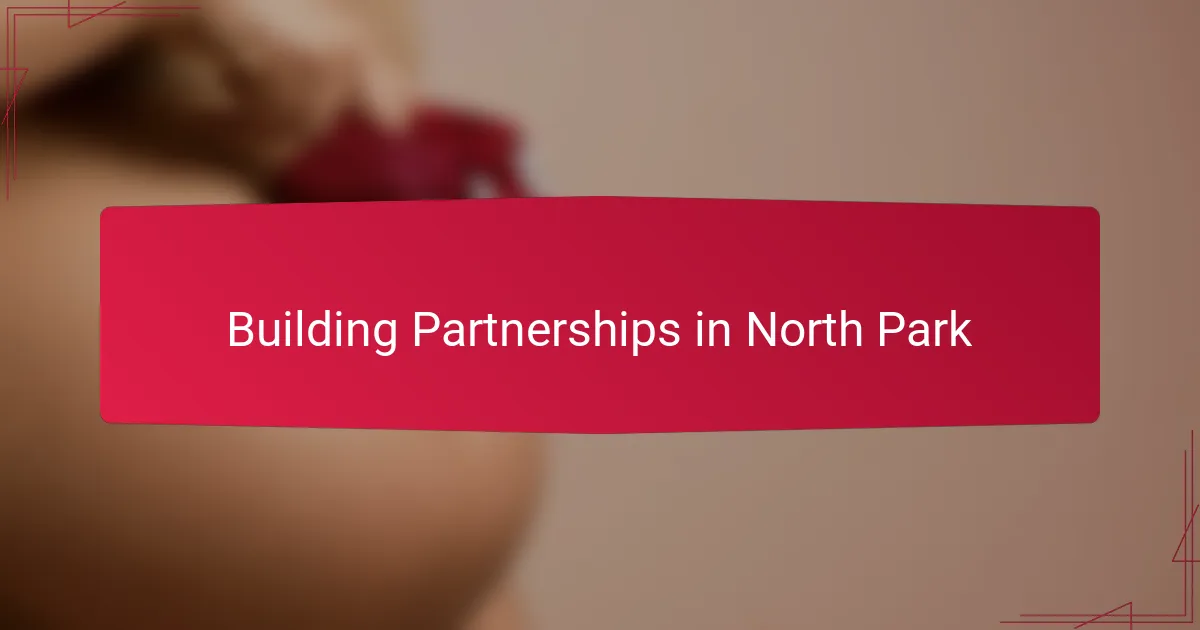
Building Partnerships in North Park
Building Partnerships in North Park
Working closely with local businesses and neighborhood groups was a game-changer in bringing our community garden projects to life. I still remember the first time a small café owner agreed to donate coffee grinds for compost—it felt like a real vote of confidence that united us all around a common goal.
These partnerships weren’t just practical; they brought a sense of shared ownership and pride that made every planting day feel like a celebration. Here are some key collaborators who played a vital role:
- Local cafés and restaurants providing compost materials
- Neighborhood associations offering volunteer support
- Schools contributing educational resources for kids
- City officials facilitating permits and access to public land
- Gardening supply stores donating tools and seeds
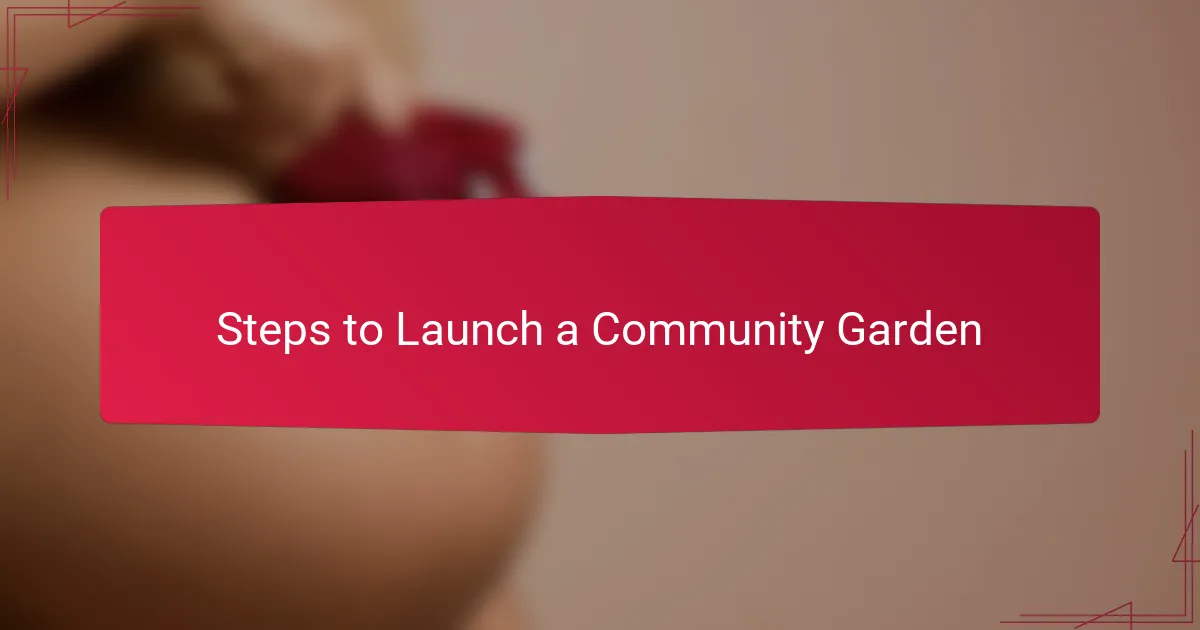
Steps to Launch a Community Garden
Launching a community garden starts with finding the right spot—somewhere accessible, sunny, and welcoming. I remember scouting different locations around North Park, asking myself, “Where will people feel comfortable coming together?” When we finally settled on a vacant lot near our neighborhood center, it felt like we had found the perfect canvas to grow both plants and friendships.
Next, gathering support from neighbors and local groups is crucial. I reached out to folks one by one, sharing the vision and listening to their ideas. That initial buzz of enthusiasm was contagious—it reminded me how powerful a simple conversation can be in planting the seeds for something bigger.
Of course, there’s a lot of groundwork to cover, like securing permissions, organizing tools, and planning what to plant first. These practical steps might seem small, but they taught me patience and teamwork in a way I hadn’t expected. Each shovel in the dirt felt like a promise that this garden was truly ours to nurture.
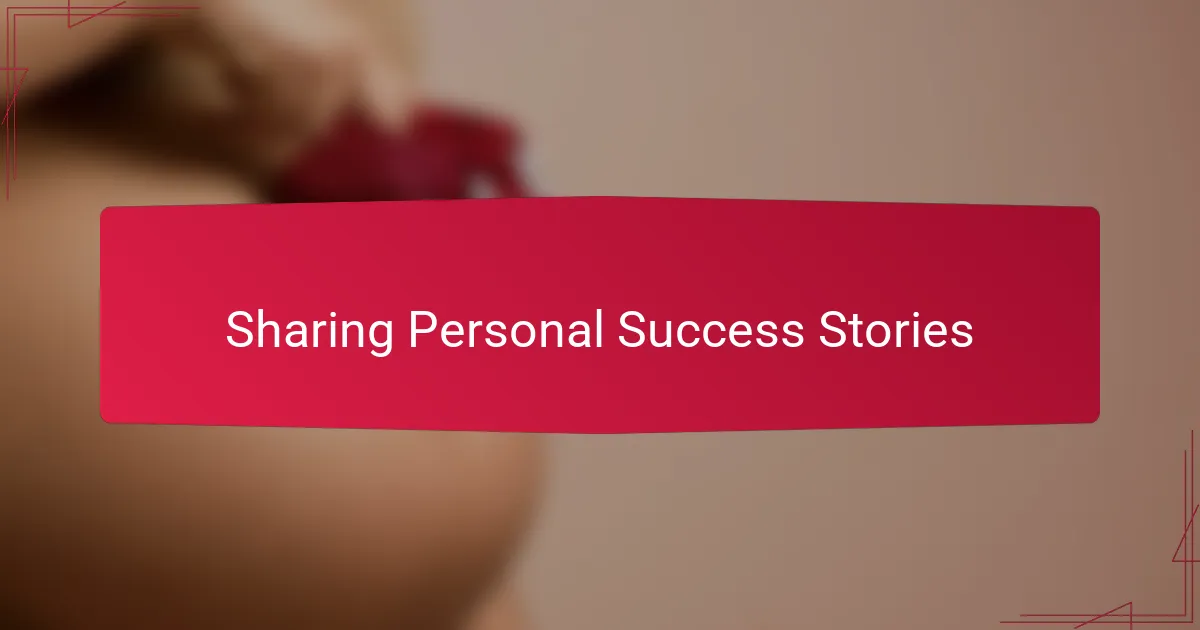
Sharing Personal Success Stories
Sharing Personal Success Stories has been a powerful tool in rallying support for the community gardens I helped establish in North Park. I remember one moment vividly: a young family who had never gardened before came to volunteer, and their excitement as their first seeds sprouted was contagious. Their joy was a heartfelt reminder of why these gardens matter beyond just the plants—they build connections and hope.
Here are some personal success stories that highlight the impact of the North Park community gardens:
- A local teacher used the garden as a hands-on classroom, sparking a love for nature in her students.
- Families who struggled with fresh produce access found a reliable source of nutritious food.
- Volunteers formed lasting friendships, turning neighbors into a supportive community network.
- One elderly participant shared that gardening gave her a renewed sense of purpose and daily joy.
- Several kids involved in the projects expressed pride in watching their efforts grow, boosting their confidence.
